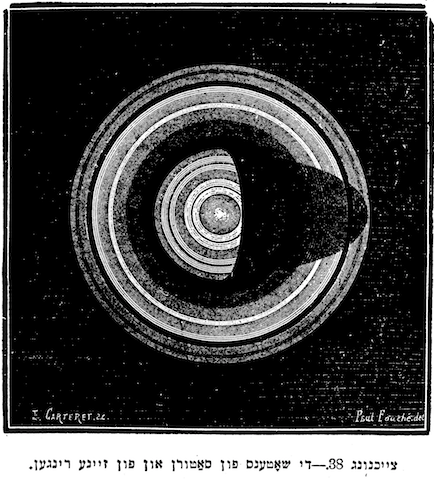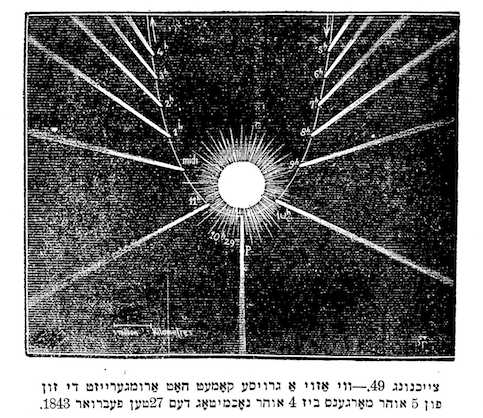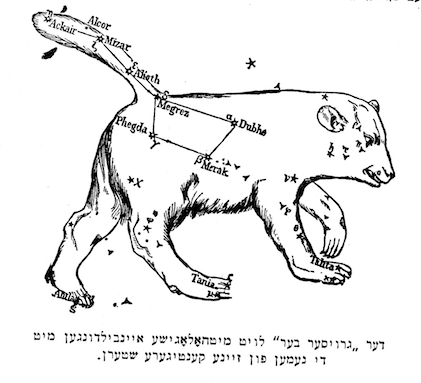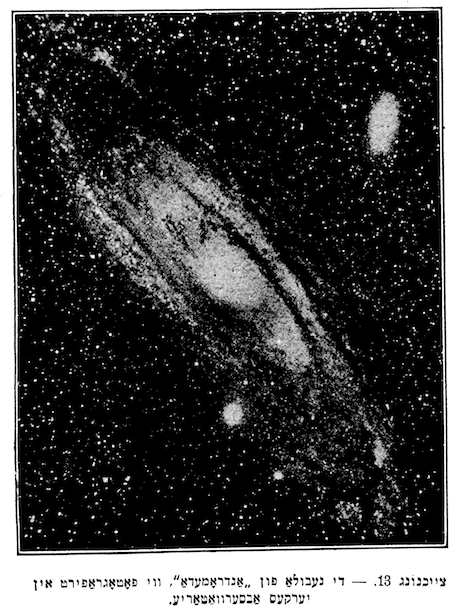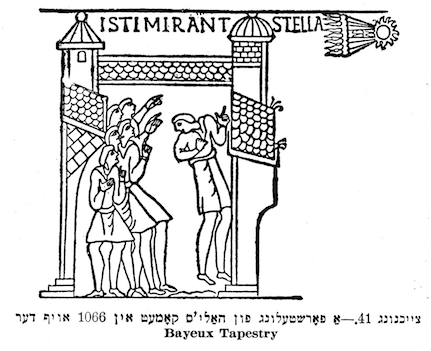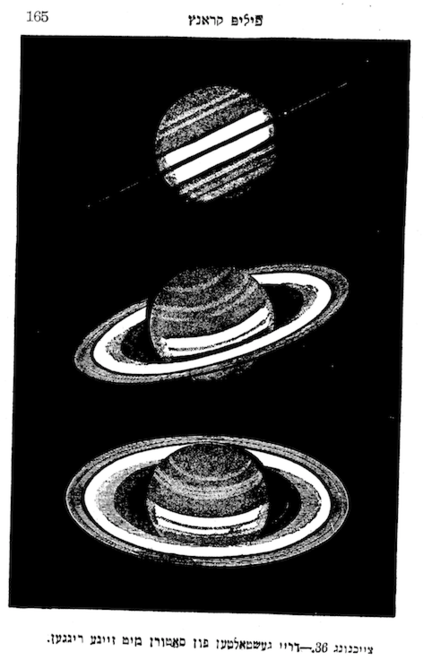A Brief History of Yiddish Astrologic Practices
In a striking Rosh Hashanah greeting card from the early 1900s, an angelic figure festooned with flowers directs a group of children to look skyward: “Children! You are looking at the New Year star. May your luck shine just as bright and clear.” A shooting star passes through the frame of the window, bidding the viewers “a sweet year.”
The idea of attaching one’s luck and fate to the movements of the cosmos is nothing new; early records from around the world show widespread acceptance of the heavenly bodies as authorities on earthly affairs. In Jewish culture, too, this belief was pervasive. Early Talmudic scholars argued over how great the influence of the stars was on daily life and even went so far as to create a complex numerological system with each of the planets corresponding to a different angel. Later, these angels came to stand for the twelve signs of the zodiac.
Although not Jewish by creation, the twelve signs of the zodiac are a prominent decorative feature of synagogues throughout the world. Both the zodiac and the Jewish calendar are governed by the cycles of the moon, so it makes sense that there was an early connection between the two. Since the invocation of the zodiac appeared widespread throughout Jewish history, I was curious if there were any books in Yiddish on the subject of astrology. When I had difficulty finding any with “astrology” in the title, on a whim, I picked up a few books on astronomy. Although today astronomy and astrology could not be more divergent disciplines, each of the Yiddish astronomical texts I read devoted a great deal of space to astrology.
One of the first books I stumbled upon was Phillip Krantz’s 1918 Himl un erd: Astronomye farn folk [Heaven and Earth: Astronomy for the People]. Born Yankev Dombro in Radok, Ukraine, and trained at Petersburg Technical Institute, Krantz changed his name upon emigrating to the United States and made a living publishing science and history books for the lay reader. His book on astronomy, while lengthy, is clear and concise in diction and sprinkled throughout with helpful illustrations.



























